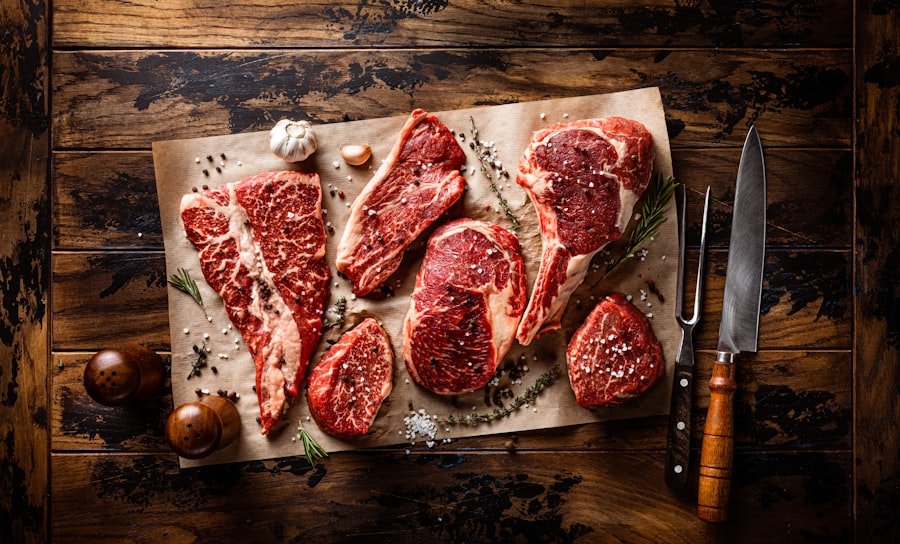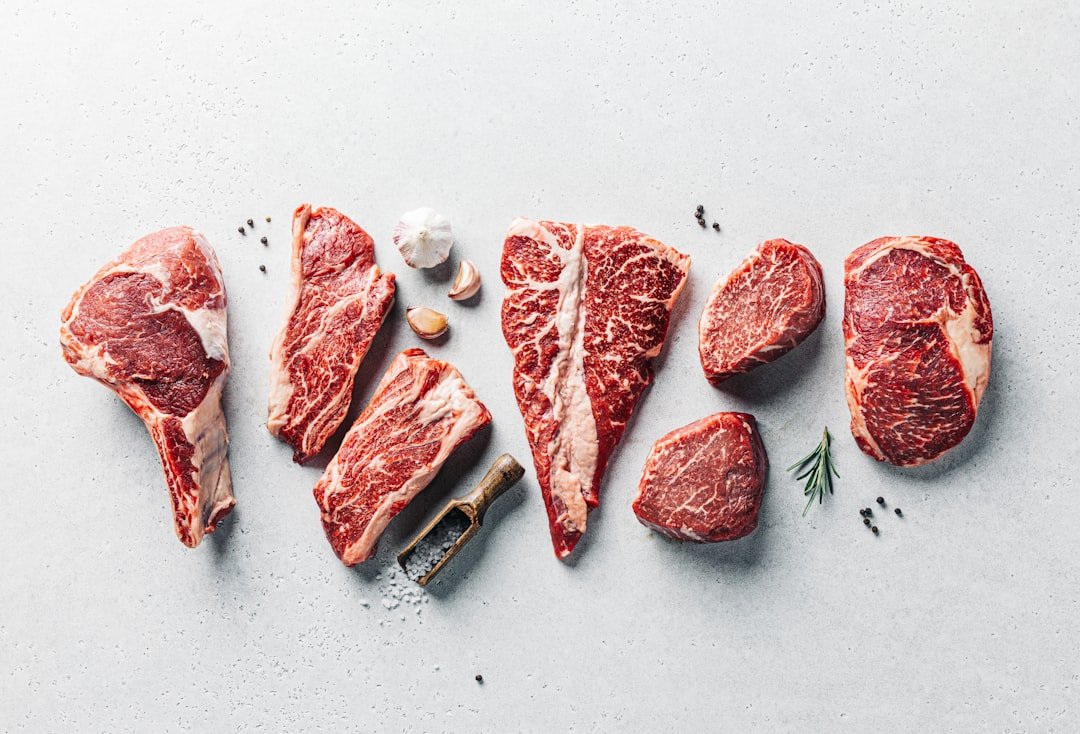Beef shank is a cut of meat that often flies under the radar, overshadowed by more popular cuts like ribeye or tenderloin. However, this particular cut is a treasure trove of flavor and texture, making it a favorite among chefs and home cooks alike who appreciate the art of slow cooking. The beef shank comes from the leg of the cow, specifically the area around the knee and ankle joints.
This muscle is heavily exercised, which contributes to its rich flavor and robust texture. When prepared correctly, beef shank can transform into a succulent dish that melts in your mouth, offering a depth of flavor that is hard to replicate with other cuts. The unique characteristics of beef shank make it ideal for braising and slow-cooking methods.
The connective tissues and collagen present in this cut break down beautifully during long cooking processes, resulting in a tender and flavorful dish. This makes beef shank an excellent choice for hearty stews, soups, and braises. As it cooks, the meat releases its juices, creating a rich broth that can serve as a base for various dishes.
The versatility of beef shank allows it to be paired with a wide range of ingredients, making it a staple in many culinary traditions around the world.
Key Takeaways
- Beef shank is a flavorful and versatile cut of meat that is perfect for hearty and comforting dishes.
- The key ingredients for a hearty beef shank recipe include beef shanks, onions, carrots, celery, garlic, beef broth, and herbs.
- Cooking beef shank involves searing the meat, sautéing the vegetables, adding the broth and herbs, and simmering until the meat is tender.
- When choosing the best beef shank, look for cuts with a rich red color, well-marbled meat, and a good amount of connective tissue for flavor and tenderness.
- Beef shank can be served with mashed potatoes, polenta, or crusty bread, and pairs well with a side of roasted vegetables or a fresh salad.
Ingredients for Hearty Beef Shank Recipe
To create a truly hearty beef shank dish, one must gather a selection of high-quality ingredients that complement the rich flavor of the meat. The primary ingredient, of course, is the beef shank itself. When selecting beef shank, look for pieces that have a good amount of marbling and connective tissue, as these will yield the best results when cooked slowly.
A typical recipe might call for about two to three pounds of beef shank, which can serve four to six people depending on portion sizes. In addition to the beef shank, a variety of aromatics and vegetables are essential for building flavor. Common choices include onions, garlic, carrots, and celery.
These ingredients not only enhance the taste but also contribute to the overall texture of the dish. Fresh herbs such as thyme, rosemary, and bay leaves can add an aromatic quality that elevates the dish further. For added depth, consider incorporating red wine or beef broth as a cooking liquid; both options will help to deglaze the pan and infuse the meat with additional flavor.
Finally, seasoning is crucial; salt and pepper are fundamental, but spices like paprika or cumin can introduce an exciting twist.
Step-by-Step Cooking Instructions

The process of cooking beef shank is straightforward yet requires patience to achieve the best results. Begin by preparing your ingredients: chop the onions, mince the garlic, and cut the carrots and celery into bite-sized pieces. This mise en place will streamline your cooking process and ensure that everything is ready when you need it.
Next, heat a large Dutch oven or heavy-bottomed pot over medium-high heat and add a couple of tablespoons of oil. Once the oil is shimmering, season the beef shank with salt and pepper before searing it in the hot pot. Aim for a deep brown crust on all sides; this caramelization will add layers of flavor to your final dish.
After browning the beef shank, remove it from the pot and set it aside. In the same pot, add your chopped onions, carrots, and celery. Sauté these vegetables until they begin to soften and develop color, which should take about five to seven minutes.
Add minced garlic and cook for an additional minute until fragrant. At this point, deglaze the pot with red wine or beef broth, scraping up any browned bits stuck to the bottom. Return the beef shank to the pot along with any herbs you’re using—thyme and bay leaves work particularly well.
Pour in enough broth or water to cover the meat halfway, then bring everything to a gentle simmer. Cover the pot with a lid and transfer it to a preheated oven set at 325°F (163°C). Allow the beef shank to braise for approximately two to three hours or until it becomes fork-tender.
The low-and-slow cooking method allows the collagen in the meat to break down fully, resulting in a rich and flavorful dish. Check occasionally to ensure there’s enough liquid in the pot; if it appears too dry, add more broth or water as needed. Once cooked, remove the pot from the oven and let it rest for a few minutes before serving.
For more information on cooking techniques, you can visit the Food Network.
Tips for Choosing the Best Beef Shank
| Factors to Consider | Details |
|---|---|
| Quality | Look for beef shank with good marbling and a bright red color. |
| Size | Choose a beef shank that is the right size for your recipe or meal. |
| Freshness | Check the expiration date and look for beef shank that is firm to the touch and has no off-putting odor. |
| Source | Consider the source of the beef shank, such as grass-fed or grain-fed, and choose according to your preference. |
| Price | Compare prices and consider your budget when choosing the best beef shank. |
Selecting high-quality beef shank is crucial for achieving optimal flavor and tenderness in your dish. When shopping for this cut of meat, consider visiting a local butcher or specialty meat shop where you can ask questions about sourcing and quality. Look for beef shank that has a bright red color with visible marbling; this fat will render during cooking and contribute to the overall richness of your dish.
Avoid any cuts that appear dull or have excessive amounts of gristle. Another important factor is freshness; always check for sell-by dates or ask your butcher about when the meat was cut. Freshness can significantly impact both flavor and texture.
If possible, inquire about the breed of cattle as well; grass-fed beef often has a more pronounced flavor compared to grain-fed varieties. Additionally, consider purchasing bone-in beef shank if available; the marrow within the bone adds an extra layer of richness to your dish as it cooks.
Serving Suggestions for Beef Shank
Once your beef shank has been cooked to perfection, it’s time to think about how to serve this hearty dish. One classic approach is to serve it over a bed of creamy mashed potatoes or polenta, allowing the rich sauce from the braise to soak into the starches. This combination not only provides a comforting base but also balances out the robust flavors of the meat.
Alternatively, consider serving it alongside roasted root vegetables or sautéed greens for a more colorful plate that adds nutritional value. For those looking to elevate their presentation further, consider garnishing with fresh herbs such as parsley or chives just before serving. A sprinkle of freshly cracked black pepper can also enhance both appearance and flavor.
If you have prepared a sauce from the braising liquid, drizzle it generously over the meat before serving; this will not only enhance moisture but also provide an appealing sheen that makes the dish visually enticing.
Health Benefits of Beef Shank

Protein Powerhouse
Beef shank is an excellent source of protein, providing around 25 grams per serving, making it an ideal choice for those looking to increase their protein intake. Protein is essential for muscle repair and growth, as well as overall bodily function.
Vitamins and Minerals Galore
In addition to protein, beef shank contains important vitamins and minerals such as iron, zinc, and B vitamins like niacin and vitamin B12. Iron is crucial for oxygen transport in the blood and can help prevent anemia, while zinc plays a vital role in immune function and wound healing. The B vitamins found in beef shank are essential for energy metabolism and maintaining healthy nerve function.
A Healthy Addition to a Balanced Meal
When cooked with vegetables and herbs as part of a balanced meal, beef shank can contribute positively to overall health. Its nutritional benefits make it a worthy addition to a healthy diet when consumed in moderation.
Variations of the Beef Shank Recipe
The beauty of beef shank lies in its versatility; there are countless variations on how to prepare this cut that can cater to different tastes and culinary traditions. For instance, you might consider preparing an Italian-style osso buco by braising beef shank with tomatoes, white wine, garlic, and aromatic herbs like rosemary and thyme. Traditionally served with gremolata—a mixture of lemon zest, garlic, and parsley—this dish offers a bright contrast to the rich flavors of the meat.
Alternatively, you could explore Asian-inspired flavors by marinating the beef shank in soy sauce, ginger, garlic, and sesame oil before braising it with star anise and cinnamon sticks. This approach yields a fragrant dish that pairs beautifully with steamed rice or noodles. For those who enjoy spicy food, adding chili peppers or sriracha sauce during cooking can introduce an exciting kick that complements the natural richness of the beef.
Conclusion and Final Thoughts
Beef shank may not be as widely recognized as other cuts of meat, but its potential for creating deeply flavorful dishes should not be underestimated. With its rich taste profile and ability to become incredibly tender through slow cooking methods, it offers an opportunity for culinary exploration that can yield satisfying results. Whether you choose to prepare it in a traditional stew or experiment with global flavors, beef shank can easily become a beloved staple in your kitchen.
As you embark on your journey with this cut of meat, remember that patience is key; allowing time for flavors to develop will reward you with a meal that delights both your palate and your guests. With thoughtful ingredient selection and creative variations on preparation methods, you can elevate beef shank from an overlooked cut to a star attraction on your dining table.
